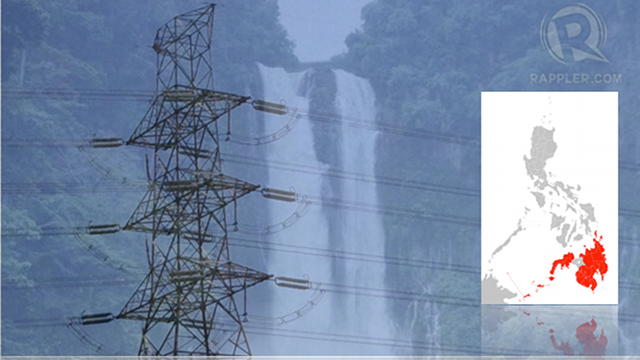SUMMARY
This is AI generated summarization, which may have errors. For context, always refer to the full article.

MANILA, Philippines – The more, the merrier.
If this was the case in Mindanao’s power industry, the region could have been the country’s next frontier, Erramon Aboitiz, president and CEO of Aboitiz Equity Ventures, stressed at the at the Philippine Yearend Economic Briefing held on February 13.
The Aboitiz group, currently the biggest private power producer in the country in terms of “installed” capacity, cited the decades-long dominance of the state-owned hydro-powered plants in Mindanao as the reason why the region has not realized its full potential.
“There are a lot of questions as to why it’s taken so long for people to invest in power plants in Mindanao. It’s because we are afraid of competing against the government that has been a dominant player in Mindanao,” said Aboitiz.
What had constrained companies from expanding in Mindanao was the presence of National Power Corp (Napocor), the operator of the Agus-Pulangi hydropower complex, which provides half of Mindanao’s electricity supply.
Since the water that flows from the Lanao lake and Agus river system, the power plant offers very low rates, which held back private investors from putting up facilities that would compete with Napocor.
“I hate to admit it but we were afraid of competing with Napocor in Mindanao,” Aboitiz said
“Mindanao is constrained by lack of reliable power, some infrastructure…Throughout 2012, Mindanao suffered from power outages due to its heavy dependence on hydro resources and the fact that no new power pant was built for over a decade,” he said.
Currently, the Mindanao grid needs around 1,597 MW daily, but existing capacities only produce 1,261 MW.
The Aboitiz group announced late 2012 that it would spend P35 billion to boost its generating capacity in the region over the next 3 years, making them the biggest power generator on the island.
The new frontier
“Mindanao is the new business frontier. It is rich in agricultural and natural resources [that] needs to be unlocked,” noted Aboitiz, echoeing a popular sentiment especially from those working on the Bangsamoro peace deal.
“Mindanao can learn form the evolution of the power industry in other regions, such as Luzon. Privatization of the power industry in Luzon has worked well for the consumer and industry by taking a competitive environment free of government intervention and subsidy,” he added.
The national government has been eyeing to implement a privatization plan for the Agus-Pulangi facility, which needs to be rehabilitated so its existing 982-megawatt capacity could be maximized and expanded.
The plan involves breaking up the ownership structure of facility, thus dismantling its near-monopoly.
Opposition
Aside from the low power rates, Mindanao’s major power plants were exempted from privatization for 10 years to keep rates in the region from going up. The ban on selling Agus and Pulangi expired in 2010.
Under the Electric Power Industry Reform Act of 2011 (Epira), all of Napocor’s power assets were supposed to be privatized to generate funds to pay down the Napocor’s debts, which had long burdened government coffers.
Under Epira, a private company cannot own 30% of an area’s power generation sector. Agus and Pulangi together supply 52% of Mindanao’s energy needs. – with reports from Aya Lowe and Lala Rimando/Rappler.com
Add a comment
How does this make you feel?
There are no comments yet. Add your comment to start the conversation.